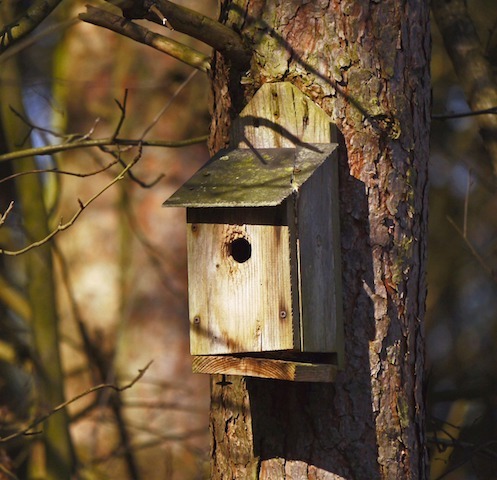Introduction
 Nestbox building is a good activity for the autumn, ready for occupation (hopefully!) the following spring. In some areas, birds have difficulty in finding suitable natural nesting sites and well-placed nestboxes can lead to an increase in the bird population in your garden or school grounds. They give not only a lot of enjoyment through watching the day to day life of the birds but also valuable practise in observation and recording.
Nestbox building is a good activity for the autumn, ready for occupation (hopefully!) the following spring. In some areas, birds have difficulty in finding suitable natural nesting sites and well-placed nestboxes can lead to an increase in the bird population in your garden or school grounds. They give not only a lot of enjoyment through watching the day to day life of the birds but also valuable practise in observation and recording.
Before tackling the construction of nestboxes with children it is a good policy to discuss the requirements of the birds and the following points should be covered during the discussion:
A) correct size box for the species desired
B) correct siting for species desired
C) box must be durable and well-drained
D) shelter from extremes of climate
E) protect against predators
F) easy inspection
Details are given overleaf for the construction of two simple nest boxes, one for small hole nesters e.g. blue tits, and another for those small birds preferring a box with an open front e.g. robins. The dimensions given are in centimetres; the wood can be any untreated soft-wood, but may be improved aesthetically by finishing with bark panels. If the diagrams are followed you will find that no joints are necessary and that the wood can simply be butted and screwed or nailed together. The hole is at the front where it is protected by the overhanging roof. If you want to attract a particular species, the size of the hole is important. Only blue tits will be able to use a box with a hole 30mm in diameter. Great tits will most likely take over a box with a hole 35mm in diameter. Holes 50mm and more invite sparrows and starlings.
Read More: Siting the Nestbox